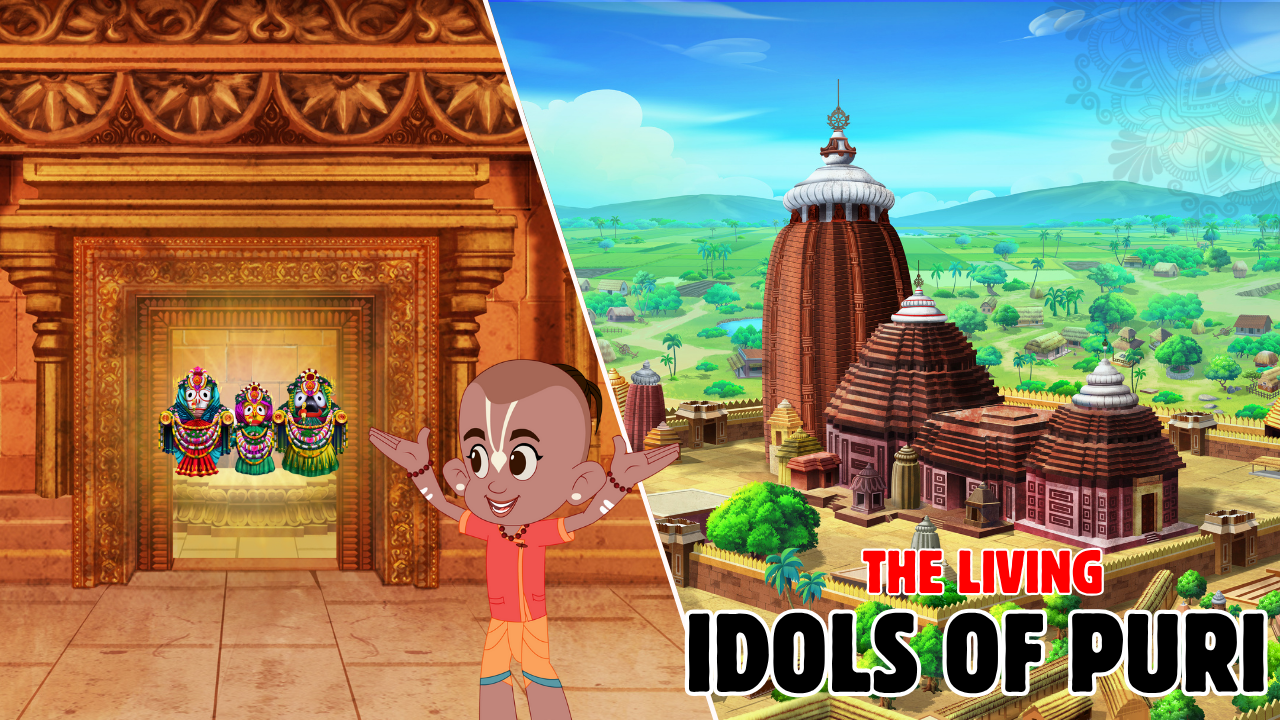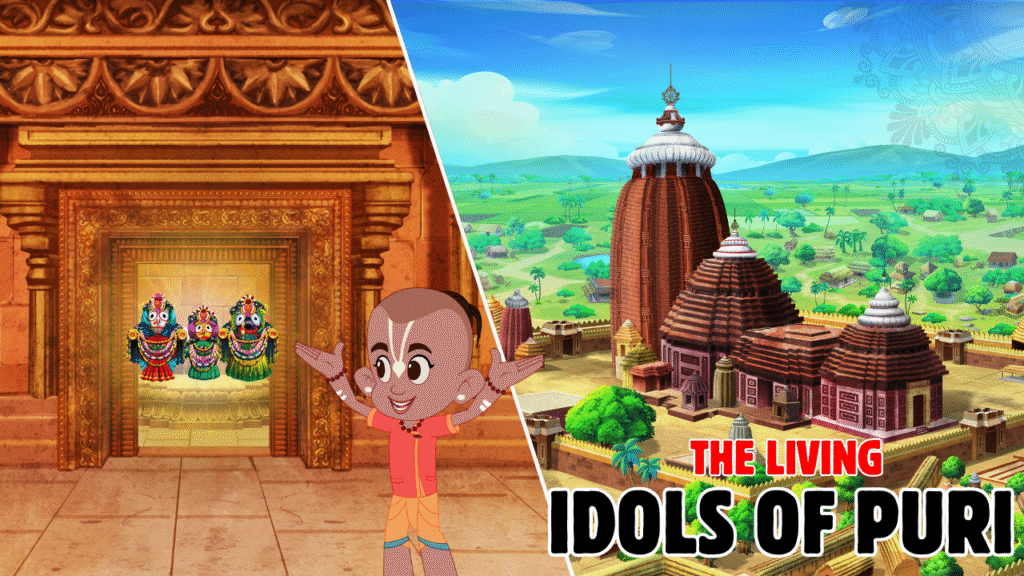
The Living Idols of Puri Made of Wood, Not Stone
Unveiling the Mystery Behind the Living Forms of the Divine
The Living Idols of Puri, the sacred town of Puri, Odisha, is home to one of the most unique and spiritually rich temples in the world — the Shree Jagannath Temple. While most temples across India house deities made of stone or metal, the deities of Lord Jagannath, Balabhadra, Subhadra, and Sudarshan are made of neem wood — and are reborn every few decades.
This choice of wood over stone is not a coincidence. It is deeply rooted in spiritual symbolism, divine instruction, and ancient tradition.
Let us explore why the deities of Puri’s Jagannath Temple are carved from wood, and what this signifies in the grand philosophy of Jagannath culture.

A Living God Deserves a Living Form
The most profound reason lies in the philosophy of Lord Jagannath himself.
Jagannath is not just a statue; He is a living deity.
Wood is an organic, perishable, breathing material, unlike cold, unmoving stone. It signifies that Lord Jagannath is alive, accessible, and ever-changing, just like the world and humanity.
This idea of a “Chalanti Prabhu” (the moving, living Lord) is central to Jagannath consciousness. His form may decay and die, but his soul — the Brahma Padartha — is eternal.
The Divine Will: Carving as per the Scriptures
According to Skanda Purana and Jagannath Mahatmya texts, Lord Vishnu himself instructed King Indradyumna to install wooden idols at the site where the Daru Brahma (divine wood) would appear. The Lord desired to take a form made from sacred neem trees, which were to be found through divine signs.
The wood was not chosen by humans — it was ordained by the divine.
The Daru Brahma: Sacred Neem Trees with Mystical Signs
The wood used is not ordinary. The Neem trees (Daru) used to carve the deities must fulfill strict spiritual conditions:
-
No visible cracks, disease, or bird nests
-
Naturally marked with divine symbols (chakra, shankha, lotus, etc.)
-
Must be located near water and cremation grounds
-
Chosen through a secret spiritual journey called Banajaga Yatra
Once selected, the tree is ritually worshipped and ceremonially cut, then brought to the temple for carving the new deities during the Nabakalebara ritual.
The Cycle of Rebirth: Why Wood Suits Jagannath
Every 12 to 19 years, the deities are replaced through Nabakalebara, a rare event when Lord Jagannath and his siblings are reborn in new wooden forms, and the soul-substance is transferred in a secret midnight ritual.
Such a process is not possible with stone idols, which are permanent and do not decay. The use of wood allows this divine renewal — symbolizing death and rebirth, just like in human life.
This makes the Lord more relatable — a God who lives, dies, and is reborn, just like us.
Spiritual Symbolism of Wood
-
Impermanence: Wood perishes over time, reflecting the transient nature of the body, while the soul remains unchanged.
-
Natural Connection: Being a product of nature, wood symbolizes the closeness between God and the environment, and reminds us of our duty to live in harmony with the earth.
-
Simplicity: Unlike polished stones and gold-plated idols, wooden deities reflect humility and purity, reminding devotees that divinity resides in simplicity.
Why This Makes Jagannath Temple Truly Unique
While most temples are built to preserve permanence, Puri’s Jagannath Temple embraces change. It teaches that divinity does not lie in unchanging material but in the eternal spirit that flows through time, form, and space.
-
Only here do we see God being treated like a human — falling ill, going into seclusion, changing bodies, and yet remaining ever divine.
-
Only here does God ride with the people during Rath Yatra, leaving His sanctum to be among His devotees.
And only here is God not carved in lifeless stone, but in living, sacred wood.
A God Who Lives Among His People
The wooden form of Lord Jagannath is not just a ritualistic choice — it is a spiritual declaration. It says that the divine is not distant or untouchable. He is alive, present, and in tune with the world’s cycles.
By being carved in wood and reborn again and again, Lord Jagannath becomes the God of the people — dynamic, compassionate, and deeply human.
In the ever-changing world, He changes too — not to reflect weakness, but to walk with us.


Leave a reply here
Your email address will not be published. Required fields are marked *